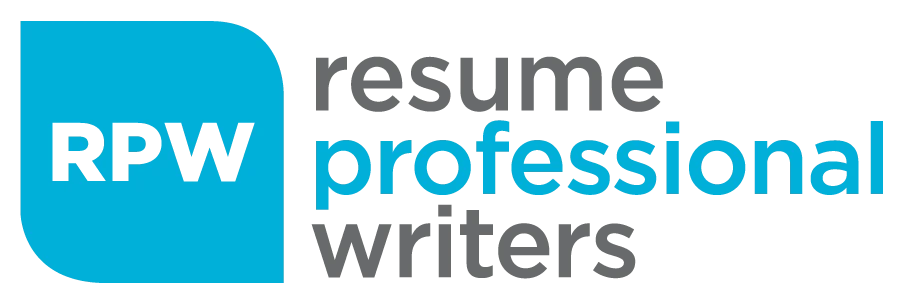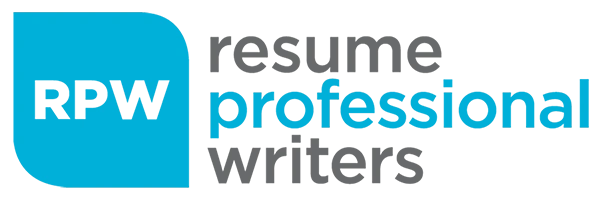Staying competitive in your career goes beyond performing well—it’s about committing to continuous growth. Continuing professional development (CPD) gives you the tools to take charge of your career, enhance your expertise, and open doors to new opportunities. Whether you’re aiming for a promotion, broadening your skill set, or staying ahead in your field, investing in CPD is a smart strategy to boost both your performance and professional fulfillment.
In this article, we’ll explore how CPD contributes to long-term career success, outline key strategies for building a purposeful CPD program, and highlight the role of organizational support in driving effective learning. You’ll also discover how to overcome common challenges and ensure your development efforts deliver meaningful results. Let’s dive into the essential elements that make CPD a powerful tool for professional growth.
Understanding Continuing Professional Development
Continuing Professional Development is a powerful tool that empowers professionals to sharpen their skills and expand their knowledge continually. At its core, CPD is about keeping your professional abilities up-to-date and ensuring competency in your practice. This ongoing process of learning and continuing professional education is what sets successful professionals apart from the rest.
In fields like nursing, the impact of CPD is profound. It is essential for maintaining high professional standards and improving patient care outcomes. In many countries, CPD is mandatory for nurses to maintain their professional registration, underscoring its significance. But beyond the mandatory requirements, CPD is driven by the intrinsic motivation of professionals who are committed to enhancing their skills and knowledge.
Documenting and recording your learning activities through CPD contributes to professional growth and supports career progression. It helps in developing a career plan and accessing new job opportunities. CPD encourages you to maintain consistent and high standards, ensuring that you remain competent and confident in your professional practice.
Definition and Importance of CPD
Continuing Professional Development is the intentional maintenance and development of knowledge and skills for professional performance. It involves honing current skills, developing them to a new level, or learning new ones to expand job roles or prepare for promotion. CPD is essential for professionals to stay up-to-date with the latest developments in their field, enhance their skills and knowledge, and maintain their professional registration. It is a crucial aspect of professional development, enabling individuals to adapt to changing circumstances, improve their performance, and advance their careers.

Benefits of CPD for Professionals
Engaging in Continuing Professional Development offers a multitude of benefits that can transform your professional journey. One of the primary advantages is the opportunity to gain new skills and enhance your overall proficiency in your field. This continuous improvement leads to better patient care and outcomes, especially for healthcare professionals, making continuing medical education essential.
Participation in CPD activities is not just about meeting requirements; it significantly contributes to career satisfaction, increased job satisfaction, and professional confidence. Earning CPD points through activities like training courses, conferences, and self-directed learning helps professionals maintain professional registration and demonstrate a commitment to continuing education. This commitment is often recognized and valued by professional bodies, further enhancing your career progression.
Moreover, CPD helps you align your learning with your career goals and ambitions, maximizing growth and satisfaction. Organizational support plays a crucial role in this regard. When organizations encourage and facilitate CPD, it positively influences your motivation and perceived value of CPD opportunities. Thus, CPD is not just a personal endeavor but a collaborative effort that benefits both individuals and their organizations.
Creating an Effective CPD Program
Creating an effective CPD program is essential for maximizing the benefits of continuous professional development. A well-structured CPD plan serves as a roadmap for focusing on your professional development goals and tracking your progress. It involves organizing CPD activities and reflecting on your learning to ensure continuous growth.
Tailoring CPD programs to individual and organizational needs enhances engagement and effectiveness. This involves identifying learning gaps, setting specific CPD objectives, and implementing diverse CPD activities. By doing so, you ensure that your CPD efforts are targeted and impactful.
Examples of CPD events include guest presentations, panel discussions, conferences, seminars, and industry trade shows. A blended approach to CPD learning, combining structured and informal learning environments and educational events, is recommended for better knowledge retention and engagement.
Accessible CPD, along with structural and moral support, is crucial for the success of any CPD program. Let’s delve into the specifics of creating an effective CPD program.
Identifying Learning Gaps
Identifying learning gaps is the first step in creating a meaningful CPD program. This process involves an ongoing assessment of skill levels to ensure that your CPD activities are aligned with the changing requirements of your field. Organizations often use granular and employee-specific analysis to determine the skill requirements for CPD.
Creating a comprehensive list of required skills before setting CPD goals helps effectively identify learning gaps. This list serves as a benchmark to measure current abilities and pinpoint areas for improvement. Understanding these gaps allows you to tailor CPD activities to address specific weaknesses and enhance overall competency.
Active learning, reflective learning, and self-directed learning are vital aspects of this process. They provide a diverse range of learning experiences that help close the identified gaps, improve skills, and foster lifelong learning, personal skills, and continuous professional growth. By regularly assessing and addressing your learning needs, you ensure that your professional skills remain current and relevant.
Setting CPD Objectives
Setting clear and attainable CPD objectives is crucial for the success of your CPD program. These objectives should be specific, measurable, achievable, relevant, and time-bound (SMART) to ensure clarity and facilitate success. By defining the elements of skill requirements, you can focus on specific skills gained and weaknesses and ensure that your time and effort are spent effectively.
Reflecting on current skills and identifying areas for development that align with personal and organizational needs is crucial when setting CPD objectives. This alignment ensures that your CPD activities are not only beneficial for your career progression but also contribute to the goals of your organization.
Projection of additional skill requirements is also essential to ensure that your CPD objectives are forward-looking and adaptable to future demands. Setting well-defined CPD goals creates a clear path for continuous professional development, enhancing skills and knowledge in a structured and purposeful manner.
Implementing CPD Activities
Implementing CPD activities involves a strategic approach to ensure that your CPD program is effective and impactful. Identifying skill elements and matching them with experts is crucial for delivering high-quality CPD programs. The choice of CPD activities depends on the specific skills being developed and the goals of your own CPD+ program.
CPD training courses typically cover specific subjects or skills relevant to your industry. These courses can vary in duration, from one-day sessions to several weeks, and can be delivered in different formats, including in-person, online, or hybrid models. Online CPD courses offer the advantages of convenience, affordability, flexibility, and the availability of materials online, especially for those attending training courses as part of the CPD cycle.
Non-formal learning activities, such as reading industry publications and participating in online discussion forums, also play a significant role in CPD. Incorporating a diverse range of CPD activities ensures a comprehensive and engaging learning experience that supports continuous professional development.

Types of CPD Learning Methods
CPD learning methods are diverse and designed to cater to different learning styles and preferences. The three broad types of CPD learning methods are active learning, reflective learning, and self-directed learning. Each method offers unique benefits and approaches to professional development.
Active learning involves interactive and participation-based studies, such as training courses, workshops, seminars, and eLearning. Reflective learning, on the other hand, is more passive and involves structured formats like lectures and presentations where participants receive information without engaging actively. Self-directed learning includes unstructured activities like forum discussions, reading, and online courses, offering flexibility and informal learning experiences.
Incorporating various learning methods in your CPD activities ensures a comprehensive approach to professional development. Understanding and teaching strategies for utilizing these methods helps create a CPD program that is engaging, effective, and tailored to individual learning preferences.
Active Learning
Active learning is a vital aspect of CPD that enhances engagement and knowledge retention. Interactive learning methods, such as workshops and seminars, allow participants to actively participate in discussions and activities, promoting a more profound learning experience. These methods not only aid in skill enhancement but also foster a collaborative learning environment among professionals.
CPD webinars are another excellent example of reflective practice of active learning. They aim to educate and inform professionals about new and relevant information. Utilizing interactive learning methods in CPD activities ensures engaging and effective learning, leading to better retention and application of new skills and knowledge.
Active learning methods are particularly beneficial in fields like healthcare, where hands-on experience and collaborative learning are crucial for improving patient care and outcomes. Incorporating active learning into your CPD program enhances professional development and keeps you ahead in your field.
Reflective Learning
Reflective learning is a passive and one-directional approach to CPD that involves receiving information without active engagement. This method includes lectures, presentations, training videos, tutorials, non-interactive lectures, industry briefings, podcasts, case studies, and industry updates.
While reflective learning may not involve active participation, it plays a crucial role in CPD by providing a structured and systematic review of comprehensive information on various topics. This method allows professionals to absorb and reflect on new knowledge, which can then be applied to their practice.
Reflective learning is particularly useful for keeping up-to-date with industry developments and best practices. Regular engagement in reflective learning activities ensures that professional knowledge remains current and relevant, supporting continuous professional development.
Self-Directed Learning
Self-directed learning is an informal and flexible approach to CPD that allows professionals to take charge of their own personal learning plan. This method includes unstructured activities such as forum discussions, reading books, articles, and publications, and attending online courses.
One of the key advantages of self-directed learning is its flexibility. Online courses, for instance, accommodate personal schedules by offering the flexibility to participate at suitable times and can be spread over a period of time. CPD webinars also provide interaction, participation, and the opportunity to ask questions and complete polls or surveys.
Studying and revising for career exams is another form of self-directed learning that contributes to personal and professional development. Incorporating self-directed learning into CPD activities creates a personalized and flexible learning experience that supports continuous professional growth.

The CPD Cycle: Plan, Do, Review
The CPD cycle is a structured approach to professional development, consisting of three stages: Plan, Do, and Review.
- Plan: Identify learning needs and objectives, set goals, and develop a plan to achieve them. This stage involves a thorough assessment of your current skills and identifying areas for improvement. Setting clear, achievable goals ensures that your CPD activities are focused and purposeful.
- Do: Engage in learning activities, such as attending training courses, workshops, or conferences, to acquire new skills and knowledge. This stage is about taking action and participating in various CPD activities that align with your professional development plan.
- Review: Reflect on the learning experience, evaluate its effectiveness, and identify areas for further development. This stage involves assessing the impact of your CPD activities on your professional practice and determining what additional learning is needed.
By following the CPD cycle, professionals can ensure that their learning is focused, effective, and aligned with their career goals.
CPD Accreditation and Providers
Choosing the right CPD provider and ensuring accreditation are crucial for your professional development. Accredited CPD providers must adhere to high standards and evidence-based criteria, ensuring that their educational activities are free from commercial influence. This guarantees the quality assurance and relevance of the CPD activities you undertake.
The ANCC Accreditation Program, for example, recognizes organizations that meet rigorous standards in Nursing Continuing Professional Development. Choosing accredited CPD providers allows you to earn CPD points through activities designed and evaluated by these organizations, helping maintain competence in an evolving healthcare landscape.
Accreditation not only ensures the quality of the CPD activities but also enhances your professional credibility. It demonstrates your commitment to continuous professional development and adherence to the highest professional standards. Always opt for accredited CPD providers to maximize the benefits of CPD activities.
CPD Accreditation and Points
CPD accreditation is a process of verifying the quality and relevance of CPD activities. Many professional bodies and organizations require their members to complete a certain number of CPD points or hours to maintain their professional registration. CPD points are a measure of the learning achieved through CPD activities, and they can be used to demonstrate compliance with professional development requirements. Accredited CPD activities ensure that the learning is of high quality, relevant, and recognized by professional bodies, enhancing your professional credibility and career progression.
Overcoming Barriers to CPD Participation
Despite the numerous benefits of CPD, professionals often face barriers that hinder their participation. Nurses, for instance, frequently encounter high workloads, insufficient funding, and a lack of institutional support. These challenges can significantly demotivate professionals and limit their ability to engage in CPD activities.
Common barriers to CPD participation include poor staffing, heavy workloads, lack of funding, lack of study time, and negative organizational culture practices such as anti-intellectualism. Cuts in CPD funding can further exacerbate these issues, limiting access to necessary skills and modern healthcare practices.
Overcoming these barriers requires ensuring easy access to CPD programs, providing structural and financial support and moral support, and offering a variety of CPD activities. Organizations should strive to create a positive learning culture and provide the necessary resources and support to facilitate CPD participation. Addressing these challenges allows professionals to fully engage in CPD and reap its benefits.

The Role of Organizational Support in CPD
Organizational support plays a critical role in facilitating CPD participation and success. Providing necessary resources and time for learning is essential for enabling professionals to engage in CPD activities effectively. The culture of an organization significantly influences how CPD is perceived and engaged with by its staff.
Support from the organization can boost professionals’ motivation and commitment to engage in CPD. Positive perceptions of organizational support can lead to decreased turnover intentions and enhanced job satisfaction among staff. Creating a supportive CPD environment is crucial for professional development and overall job satisfaction.
Organizations must recognize and align with the personal goals and strategies of their staff to ensure successful CPD initiatives. Providing structured training programs and career development opportunities and fostering a supportive work environment promotes growth, engagement, and retention among staff.
Choosing a CPD Provider
When selecting a CPD provider, consider the following factors:
- Reputation: Look for providers with a good reputation, expertise in the field, and a track record of delivering high-quality CPD activities. A reputable provider is more likely to offer valuable and effective learning experiences.
- Accreditation: Ensure that the provider is accredited by a recognized professional body or organization. Accreditation guarantees that the CPD activities meet high standards and are recognized for professional development.
- Relevance: Choose providers that offer CPD activities relevant to your profession, industry, or career goals. Relevant CPD activities ensure that the learning is applicable and beneficial to your professional practice.
- Flexibility: Consider providers that offer flexible delivery options, such as online courses, workshops, or conferences. Flexibility allows you to fit CPD activities into your schedule and learning preferences.
- Cost: Evaluate the cost of the CPD activity and ensure that it is reasonable and affordable. Consider the value of the learning experience in relation to the cost to make an informed decision.
By choosing a reputable and accredited CPD provider, professionals can ensure that their learning is of high quality, relevant, and effective in achieving their career goals.
Measuring the Impact of CPD
Measuring the impact of CPD is essential for ensuring that it positively influences professional practice and enhances patient care. Participation in CPD activities tends to be higher among professionals working in non-surgical and non-intensive care units than those in more demanding departments. Understanding these differences can help identify areas for improvement in training and support.
Evaluating the effectiveness of CPD involves assessing how it improves professional practice and patient outcomes. Gaining insights into the impact of CPD allows organizations to tailor programs to address the specific needs of various health professionals within. This targeted approach ensures that CPD activities are relevant and beneficial, ultimately enhancing the quality of care provided.
Regularly measuring and evaluating the impact of CPD allows organizations to continuously improve their CPD programs and ensure that they remain effective and aligned with professional and organizational goals. This continuous assessment and improvement process is key to maximizing the benefits of CPD.

Elevate Your Career with CPD: Unlock Your Potential
Continuing Professional Development is a powerful strategy for advancing your career and staying competitive in your industry. By identifying learning gaps, setting clear objectives, and embracing diverse learning methods, CPD empowers professionals to grow their knowledge, boost confidence, and maintain high standards of performance. With the right support and accredited programs, CPD fosters continuous improvement, helping you remain competent, fulfilled, and ready to meet evolving demands in your profession.
As you commit to ongoing development, it’s equally important to ensure your career growth is effectively reflected in your resume. That’s where Resume Professional Writers can help. Our expert resume writing services are designed to showcase your CPD achievements, skills, and career milestones in a compelling, professional way. Whether you’re seeking a promotion, switching careers, or entering a new industry, we’ll craft a resume that positions you as a top candidate.
Not sure where to start? You can also take advantage of our free resume review—a no-obligation service that provides valuable insights into how your resume can better reflect your professional journey. Partner with us to take the next step in your professional journey with confidence.








